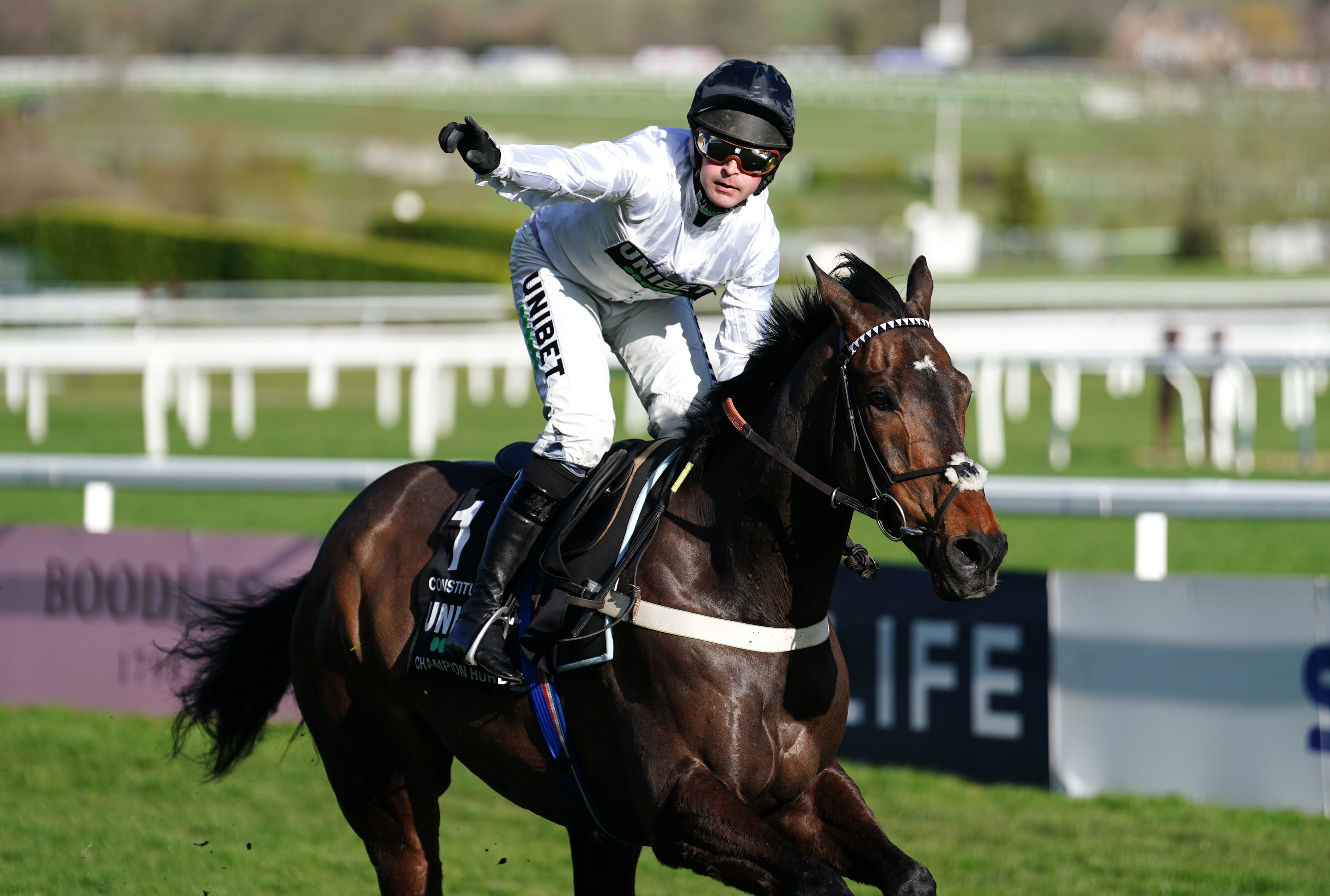Nail-biting Drama Unfolds
Nicky Henderson, the Seven Barrows trainer, is left 'traumatised' as his beloved horse Constitution Hill is rushed to the hospital with suspected colic. The former Champion Hurdle star missed this year's Cheltenham Festival and is still not completely out of the woods.
Race Fans Hold Their Breath
Constitution Hill's health scare has left punters anxiously waiting for his full recovery and possible return to the racetrack. Colic, a serious condition in horses, has cast a shadow of uncertainty over the future of this racing legend.
A Glint of Hope
Despite the grim situation, Henderson remains optimistic about Constitution Hill's prognosis. The trainer hopes to have his prized horse back at the stables soon, bringing solace to worried fans and racing enthusiasts.
Unforeseen Setback
The unexpected turn of events has derailed plans for Constitution Hill to participate in upcoming races, including the Punchestown Festival. The setback has left a void in the racing community, eagerly awaiting the return of the esteemed hurdler.

Path to Greatness
Constitution Hill, with an impeccable track record and impressive earnings, was on the brink of becoming one of the greatest hurdlers of all time. His unbeaten streak and commanding victories have cemented his place in racing history.
Frequently Asked Questions
What is the age at which a horse should begin racing training?
Horses that are two years old can begin training, although they may start with basic training. Their bodies are still young, and can adapt to the learning process. However, timing will vary depending upon the horse’s individual temperament and developmental stage.
Can you train a racehorse on any track?
While initial training on a variety tracks is possible, specific race preparation often requires facilities to simulate the conditions a horse will encounter in competition. This means that you need to have tracks that are of the correct size, with the same kind of surface your horse will be racing. By using the right track, you can condition your horse properly and help them get used to the racing environment.
What is the first training step for a racehorse?
The initial phase of training a racehorse involves a critical stage known as “breaking,” where the horse becomes accustomed to carrying a saddle, bridle, and the weight of a rider. During early sessions, the horse must be taught to accept human contact and wear the equipment throughout his racing career.
What role does a jockey play in the training of a racehorse?
Jockeys play an essential role in training racehorses. They not only ride the horses during workouts, providing feedback on the horse’s performance, but also help in educating the horse about racing tactics, such as pacing, positioning, and responding to commands. A good jockey is able to recognize the horse’s strengths, weaknesses and how they can be improved.
How important is a racing horse’s lineage?
While pedigrees can be used as a predictor of potential in a racehorse, they are not the only factors that influence their performance. While a horse’s pedigree may indicate a inherited talent for speed and endurance, other factors such as training, health, or temperament also play a role. Good training can help a horse maximize its natural abilities. It may even be able to outperform other horses with better pedigrees.
How do I condition a horse for racing?
A racehorse’s conditioning is a process that involves a combination of slow, long distance work for stamina as well as shorter, faster workouts for speed. The cardiovascular system, muscle structure, and bone structure of the horse must be developed over time with a specially designed exercise regime that mimics race conditions without injury or stress.
Statistics
- Around 80% of thoroughbred racehorses begin their racing careers by the age of two, according to industry estimates.
- An extensive survey indicated that over 90% of racehorse trainers utilize swimming as a low-impact exercise in their conditioning routines.
- The average cost to train a thoroughbred racehorse for one year can exceed $50,000, accounting for expenses related to training, boarding, and veterinary care.
- The Injury Database from The Jockey Club reports that synthetic racing surfaces have a lower horse fatality rate than dirt tracks, with a statistically significant difference of 1.2 fatalities per thousand starts on synthetics compared to 2.0 on dirt tracks.
- Approximately 70% of a racehorse’s diet consists of forage, with the remainder made up of grains and supplements to meet their high-calorie needs.
- Gastrointestinal issues affect up to 90% of racehorses during their training, emphasizing the need for careful dietary management.
External Links
equibase.com
thoroughbredracing.com
keeneland.com
paulickreport.com
thoroughbred-racing.net
bloodhorse.com
How To
How to Mentally Stimulate A Racehorse While Training
By providing different workouts and environments, you can keep your racehorse mentally engaged and prevent stress and boredom. Use outdoor exercises, trail rides, and track work in addition to the track. Introducing new commands or exercises can engage the horse. Social interactions between horses and the establishment of a bond with their handlers can positively affect a horse’s mental health. A mentally contented horse is more focused, cooperative and motivated during training or races.
Did you miss our previous article…
https://www.sportingexcitement.com/horse-racing/uk-punter-hits-jackpot-with-fairyhouse-treble-turns-35-into-285000/

